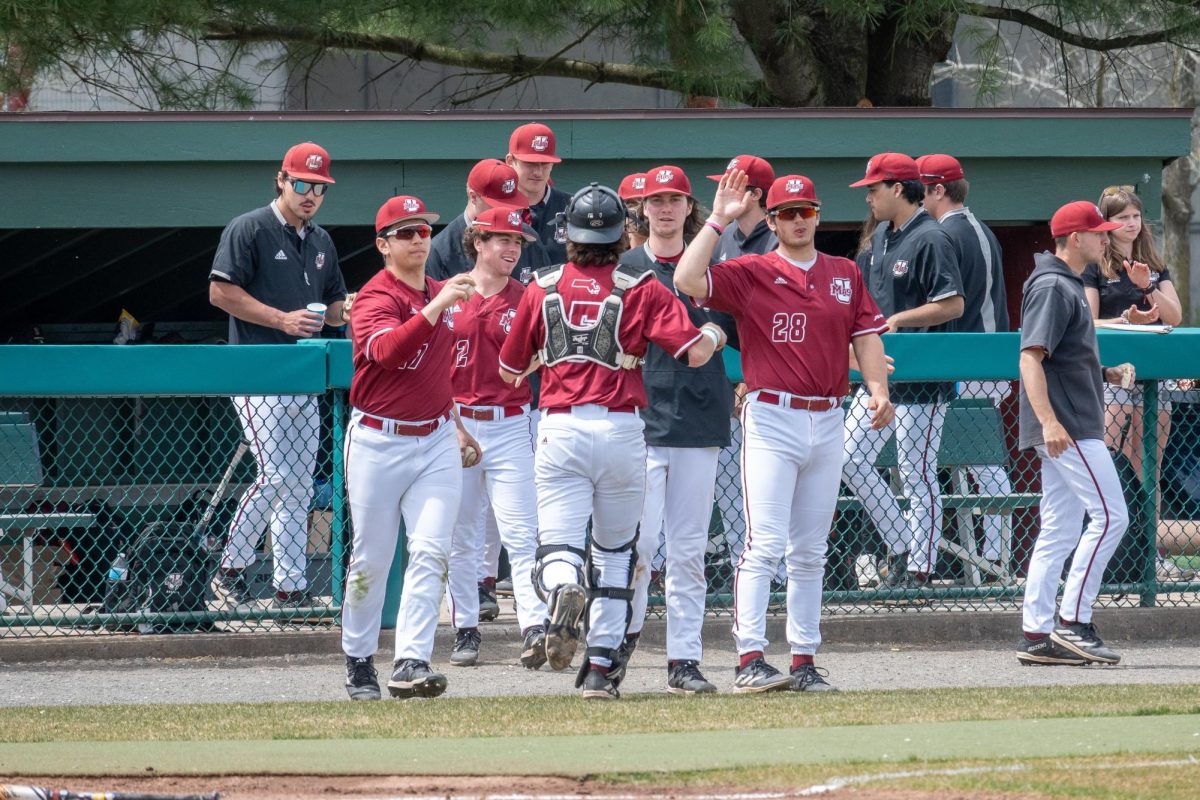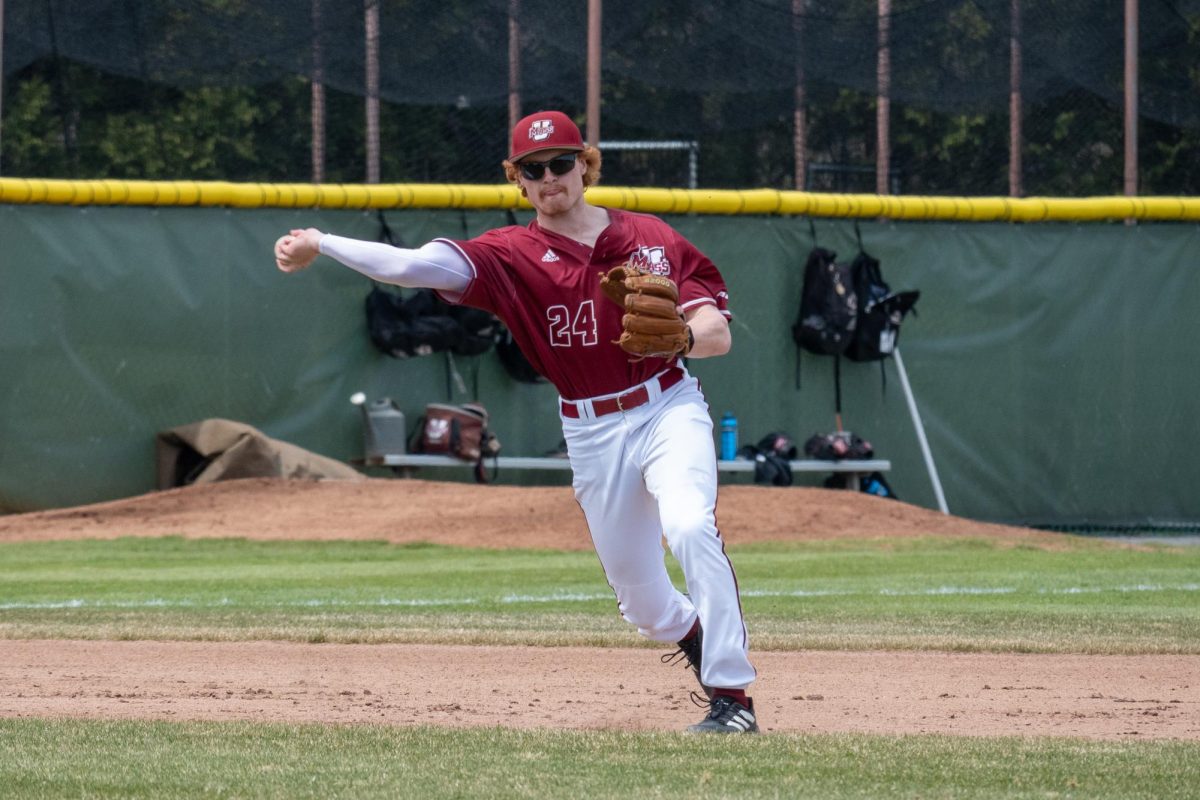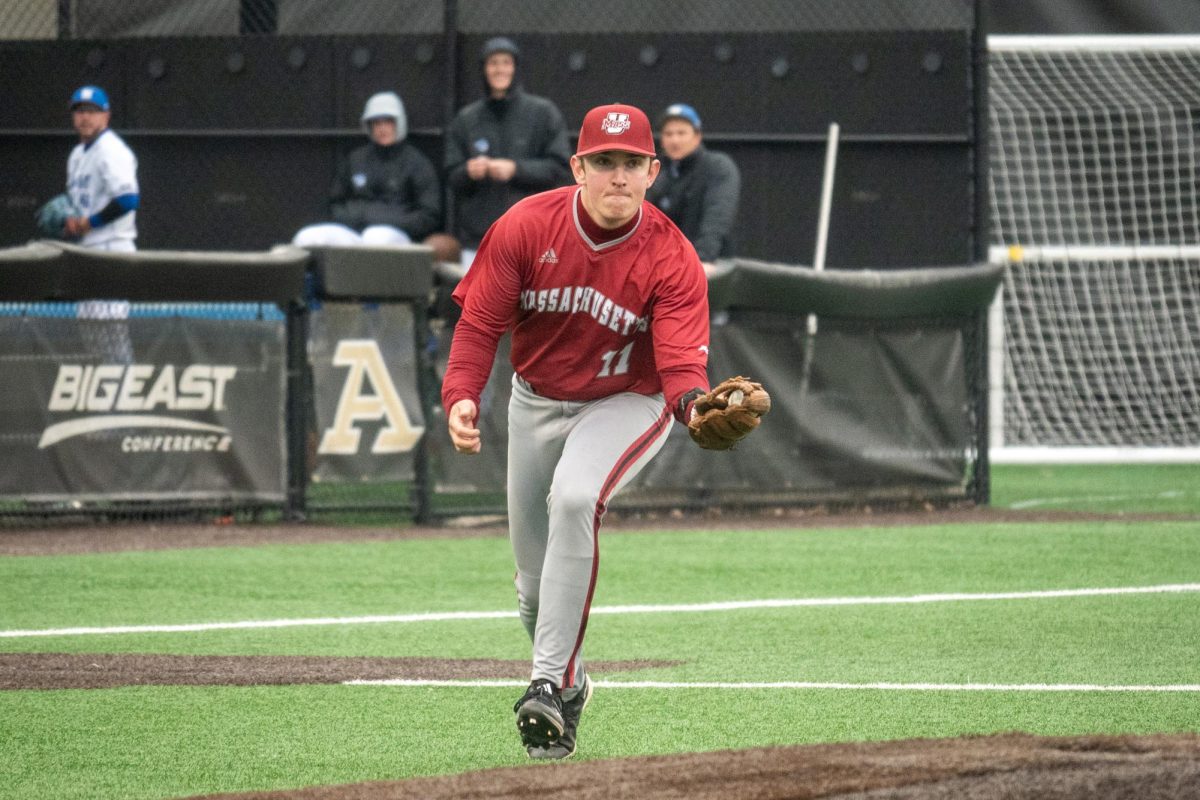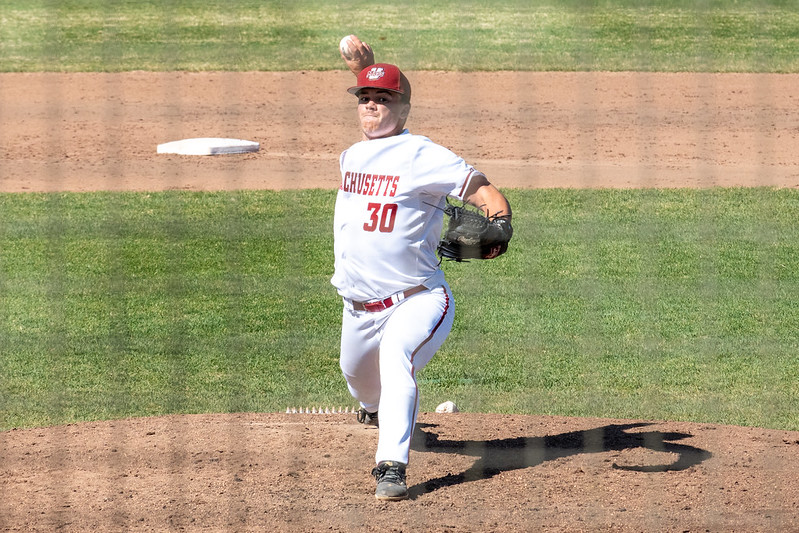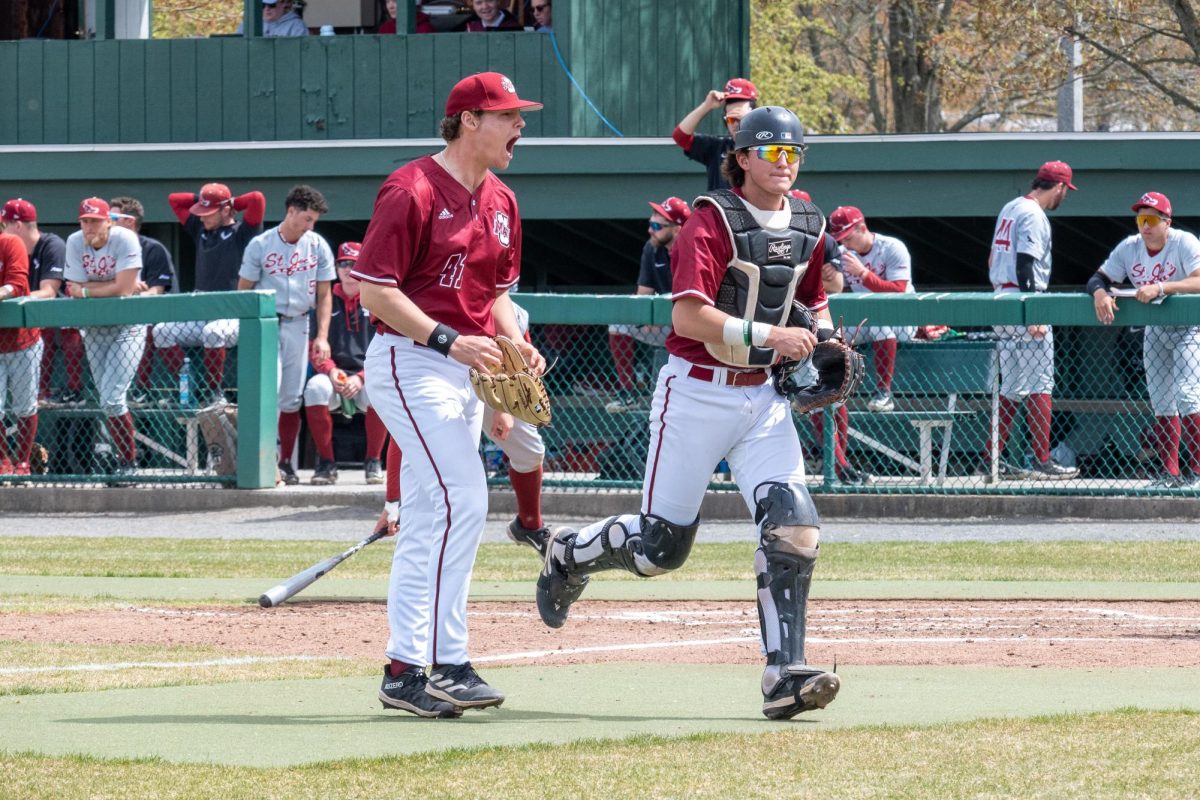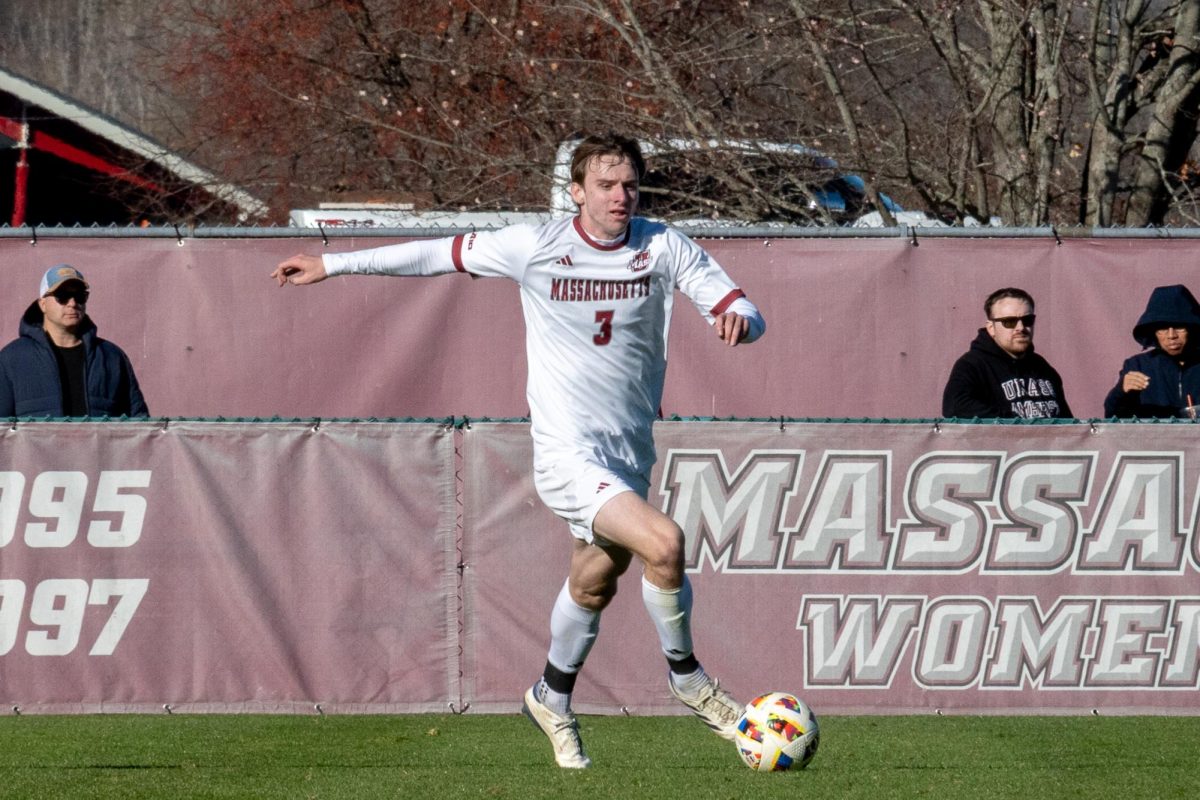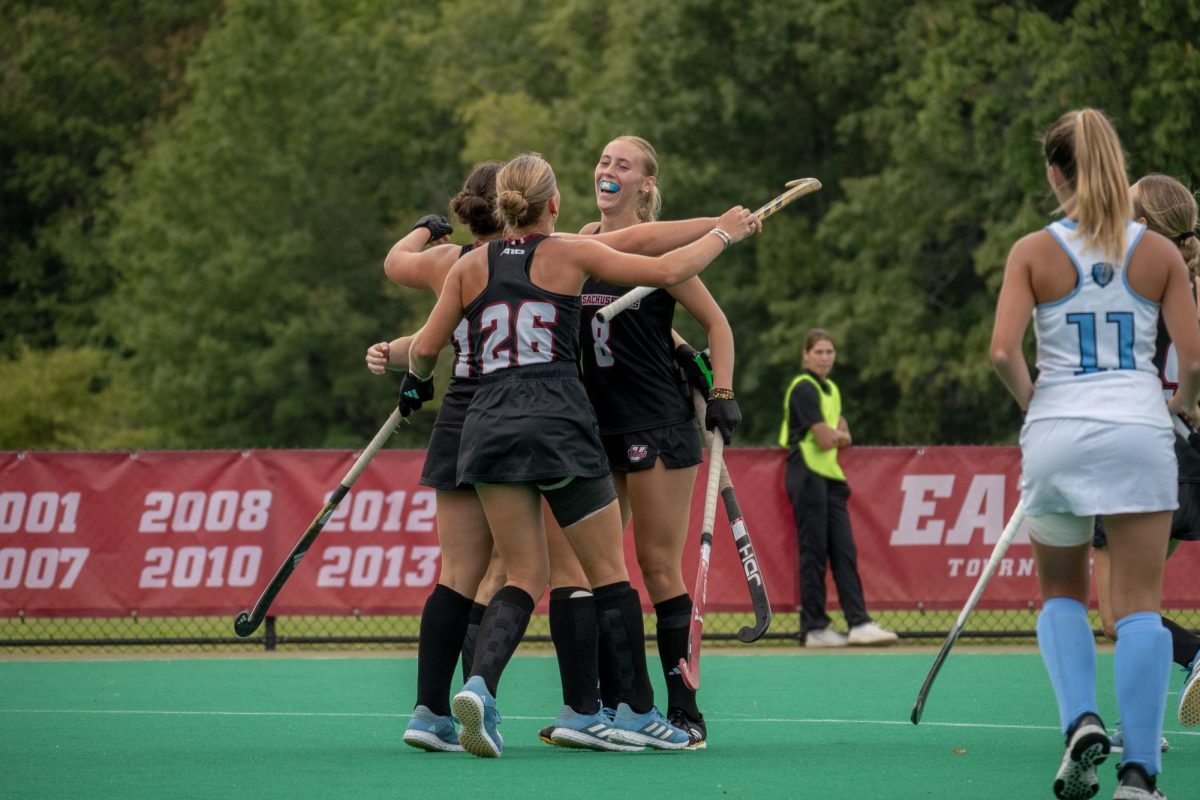
As the calendar shifted to March, Amherst remained covered with snow. It was a not-so-friendly reminder of a long cold winter, which dragged on far longer than most would have liked.
The Massachusetts baseball team’s slow start has also lasted longer than they would prefer.
The Minutemen have struggled to a 3-13 record in the first month of the season. The leading causes of their poor start would appear to be an inconsistent rotation and a knack for starting games slowly – UMass has been outscored 57-27 in the first five innings of games.
But that’s the easy explanation.
The more complex – and probably more accurate – answer stems from a question that the college baseball community has wrestled with for years: are northern teams disadvantaged by their inability to practice outdoors or host games for the first weeks of the season?
Recently, the numbers have indicated yes. Last year, the Minutemen began the season 3-12 before finishing with a more respectable 11-19 mark. In 2012, UMass started 5-8 before ripping off a 17-14 stretch to end the year.
How about a bigger sample size?
Over the past 10 years, UMass has compiled a win-loss record of 44-107 in the months of February and March for a winning percentage of .219.
From the start of April to the end of the season, the Minutemen have won 145 games and lost 169. That comes out to a winning percentage of .462, more than double the percentage of the first month of the season.
Just like the change from winter to spring, an improvement in play is nearly automatic as the season goes on.
UMass will have to wait to play its true home game until April 4 when it hosts Dayton – the Minutemen’s first home game was supposed to be today against Holy Cross, but it’s been postponed. When April 4 hits, they will have played their first 20 games on the road or at neutral sites hundreds of miles away.
“There’s a lot of late nights and early mornings,” senior third baseman Nik Campero said. “It can be a tough adjustment for younger players.”
There are other factors that specifically affect college baseball. As an outdoor sport, it’s critical that baseball teams practice outside early in the season and take repetitions in game-like scenarios on a real field.
When asked how many times the Minutemen had been outside to practice before the start of their season, UMass coach Mike Stone responded with, “a few.”
This problem is not unique to the Minutemen. Most northern college teams have to deal with the fact that more often than not, their first outdoor repetitions will come during live game action in the first weekends of the season.
Stone said there is no way to fully replicate the experience of playing outdoors, no matter how hard teams try.
“You do what you can,” Stone said. “We try to stretch our pitchers out, get hitters as many at bats as possible.”
But, Stone said, there are limits to how much you can do indoors.
“You need to get into game like situations where a lot of things are happening to get comfortable,” he said.
Campero agreed that the only way to practice certain things is to get outside and do them. He noted several disadvantages of practicing indoors.
“Boyden (Gym) can be pretty dark,” Campero said. “As a hitter, that makes it tough to pick up things like velocity and spin on the ball.
“In terms of fielding, taking repetitions outside again is key. Getting on field turf or grass helps a lot, because inside you get some weird bounces on the floor.”
Unlike southern teams, which can replicate those factors every day at practice, the only way for northern teams to adjust is to let the schedule take its course.
“It can be frustrating,” Stone said. “When you don’t start (outside) as early, you’re trying to catch up. It’s difficult to do. You’re not as acclimated as other ball clubs or players.”
UMass has certainly played into the slow-start stereotype this season. The team batting average sits at .223, while the pitching staff’s earned run average has ballooned to 5.84. To put that in perspective, Minutemen opponents have hit .280 against them, and opposing rotations have compiled a 3.48 ERA.
Despite the less-than-stellar numbers, Stone knows his team has progressed.
“There’s no question we’re a better team right now than we were the first weekend.” he said. Another good indicator for the Minutemen: many of their top hitters are nearing a crucial early-season milestone.
“For a hitter, you’re looking at about 60 at-bats before you really get acclimated outside,” Stone said.
Leadoff man Kyle Adie leads the team with 66 at-bats, and four other hitters have already eclipsed the 50 at-bat mark.
As if on cue, UMass looks like it is starting to shake its early season funk. It won back-to-back games versus La Salle in Philadelphia over the weekend, their first winning streak of the season.
While winter weather may return to Amherst this week, the Minutemen can only hope that history holds true and they have turned the corner into spring.
Ross Gienieczko can be reached at [email protected] and followed on Twitter @RossCollegian.

